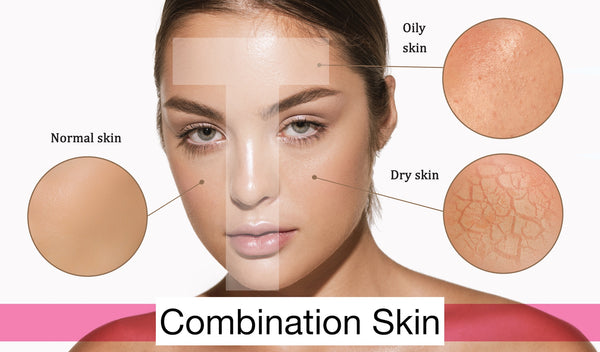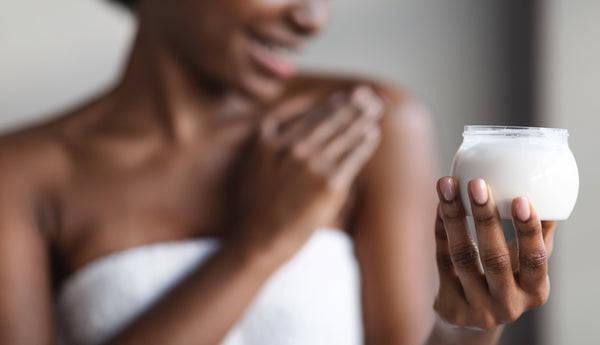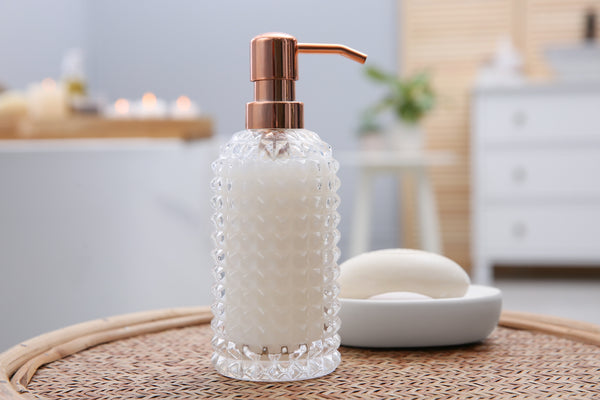What are the Different Types of Chemical Peels?

Looking to take your self-care and skincare game to the next level? Peels are a great way to show your skin a little extra love.
With different types of chemical treatments buzzing through social media lately from beauty influencers, a lot of you may have been wondering: What are chemical peels? and How do they differ from skincare? In this guide, we'll explain what chemical peels are and what benefits they offer. We’re also going to explore how you can get the most out of your next peel session – no matter what type you choose!
Read on to learn more about peels, the different types, and how you can use this powerful skin support to give you that Instagram-worthy glow you’re looking for.
Different Types of Peels
No two peel treatments are the same–and knowing the key differences between each type can help you to nourish and support your skin on a more intimate level.
Skin peels are here to help you accomplish your skin goals. They can…
- Neutralize and reduce the effects of hyperpigmentation
- Reduce the appearance of pores and fine lines
- Fight against deep wrinkles and creases
- Reduce the instance of acne, inflammation, and general irritation
- Exfoliate on a deep basal level for an unbeatable glow
We promise–it’s not too good to be true! Read on to learn everything you need to know about adding peels to your self-care routine: Whether you’re looking for the best peel for wrinkles or your next chemical peel of choice for sensitive skin
What are chemical peels?
 Chemical or skin peels are special formulations of targeted skincare that exfoliate the outer layers of your skin. They allow your product to be more effective, supporting and nourishing your skin at a deeper level for more immediate and long-lasting benefits.
Chemical or skin peels are special formulations of targeted skincare that exfoliate the outer layers of your skin. They allow your product to be more effective, supporting and nourishing your skin at a deeper level for more immediate and long-lasting benefits.
What are the different types of skin peels?
While there are multiple different types of skin peels that are formulated with different skin-supportive ingredients, most peels fall into one of three parent categories. Knowing what type of peel your skin can handle will help you to choose your go-to products for skin support more effectively.
Type 1: Light
This type of peel (also known as a superficial peel) penetrates the skin and resurfaces the very top layer of your skin – the stratum corneum. It thoroughly exfoliates, removing excess sebum and dry skin particulates from the surface, leaving behind the softer, under-layer of skin for an even more intensive level of deep moisturization. While many think of a peel as harsh, it’s a more effective way to soothe and support your sensitive skin barrier in the long run.
Examples of light peel treatments include peels that are centered around salicylic acid, alpha-hydroxy-acid (AHA), or beta-hydroxy-acid (BHAs). Glycolic acid would also fall under this category, middling between a light or medium peel as it removes the stratum corneum’s upper layer. Retinol peels may also be considered either a light or medium peel, depending on how it interacts with your unique skin type. We’ll address best practices and uses for retinol peels a little further down in this post.
Healing time from a light skin peel can vary between one to seven days. However, many are healed enough to wear makeup 48 hours after treatment. The experiences you encounter during the healing process often come down to your skin’s sensitivity and aftercare process. If you’re taking care of your skin and don’t deal with major sensitivity, you can expect to see a faster healing process. For skin that’s more sensitive, you may experience tingling, discomfort, or other related symptoms for a bit longer duration.
Type 2: Medium
Trichloroacetic acid is one of the most common medium peels, giving your skin a more aggressive exfoliation and peel experience. Glycolic acid, as mentioned above, may also qualify as a medium peel depending on your skin’s sensitivity.
Peeling skin is most commonly associated with medium or deep skin peels, and can come in waves – occurring and your skin naturally heals from the irritation caused by the peeling process. You can expect to be healing for at least two weeks or longer depending on the sensitivity of your skin.
Type 3: Deep
This type of chemical peel is considered to be surgical. Phenol is applied around your facial skin in areas with wrinkles, blemishes, hyperpigmentation, or other discoloration in small batches, allowing the chemicals to deeply penetrate without damaging the inner layers of the skin.
We want to emphasize that this procedure should only be performed by a licensed professional who has done deep peels before and should not be attempted in any other circumstance.
 How to get the most out of chemical peels
How to get the most out of chemical peels
Wondering how to get the most out of a chemical peel? Consider our suggestions for success below to enhance and prolong that radiant glow.
-
Care about after(care). Don’t be afraid to go all out on soothing moisturizers, gentle cleansers, and tools to help your skin rejuvenate and heal from your peel – no matter what type you get!
-
Don’t make this a one-time thing. You’ll get the most benefit if you create a routine schedule for peels and treatments, and stick to it. It will also help to reduce the number of chemicals and tools needed to correct the natural appearance of your skin.
-
Be careful if you DIY. If you’re using an at-home peel, be sure you’re doing it safely. If you notice burning beyond the normal tingle as it touches your skin, or experience swelling and pain, be sure to remove the peel as quickly as possible and seek a dermatologist.
-
Keep it smooth (all day long!) Don’t be afraid to moisturize several times per day in the few days after your peel, especially if you do a medium peel and see flaky, irritated skin as a result.
- Hands off. Don’t touch your skin if you can avoid it, as it can add oils and bacteria to the newly-exposed parts of your sensitive facial skin.
- Stay sun-savvy. If you have to go out directly after or in the days following your chemical peel, it's important to protect yourself. Investing in quality sun balms and protective gear is key to protecting your face from redness, flaking, or damage after your treatment.
Ask a Pro: Exploring the Best Peels For…Everything!
Now that you know what peels are and how you can leverage them for dewy, youthful, and glowing skin, it’s time to take a look at your peel strategy. Read on for our best professional chemical peel suggestions for your most common skin care needs.
-
Generic facial chemical peels: We recommend keeping it light to avoid excessive irritation and flaking. Glycolic acid is always a great choice for a simple facial peel that will do the job.
-
Strongest chemical peel: If you’re dealing with deep-level hyperpigmentation, wrinkles, sun damage, or other skin woes, you might want to go for a deep, or phenol-based surgical peel. Your dermatologist can help you to decide if this is the right choice for you.
-
Hyperpigmentation: Dealing with unsightly skin spots? You might consider going with a hyperpigmentation-targeted peel. Tools such as Trichloroacetic acid (TCA) peels are great for this. It penetrates all five layers of the skin for lasting, obvious results.
-
Chemical peels for sensitive skin: Before you consider a peel, we recommend connecting with your dermatologist to determine if it’s a viable option for you. If you’re looking for a light chemical peel to try, we recommend reaching for AHA or BHA-based peels. They’ll penetrate the top layer of your skin and address acne, sebum, and specific chemical peels for sensitive skin, featuring skin-friendly formulations that are both gentle and effective.
-
Best peel for wrinkles: Medium to deep peels generally work best for wrinkles, as they penetrate a deeper layer of skin.
-
Chemical peel for anti-aging: All peel options offer anti-aging benefits, as you’ll walk away with a youthful, radiant complexion and tightened skin you’ll love. Consulting with a dermatologist will help you to determine the right chemical peel for your needs that will give you the anti-aging benefits you’re looking for.
Frequently Asked Questions (FAQs)
Below are some frequently asked questions about chemical peel cost, how to get the most out of your peel, and the best facial chemical peel options on the market.
How much does a chemical peel cost?
A chemical peel’s cost can range from $29 (with at-home products) to several thousand dollars for in-depth surgical deep peels.
TCA peel vs. VI peel: What is the difference?
A TCA peel is a trichloroacetic acid peel, and it's considered a medium peel due to its powerful exfoliating and penetrative benefits. Vitality Institute peels (VI peels) are also medium peels, and address ongoing, chronic skin issues such as acne, age, and sun spots. Both are effective and emphasize certain elements and benefits of the peeling process.










